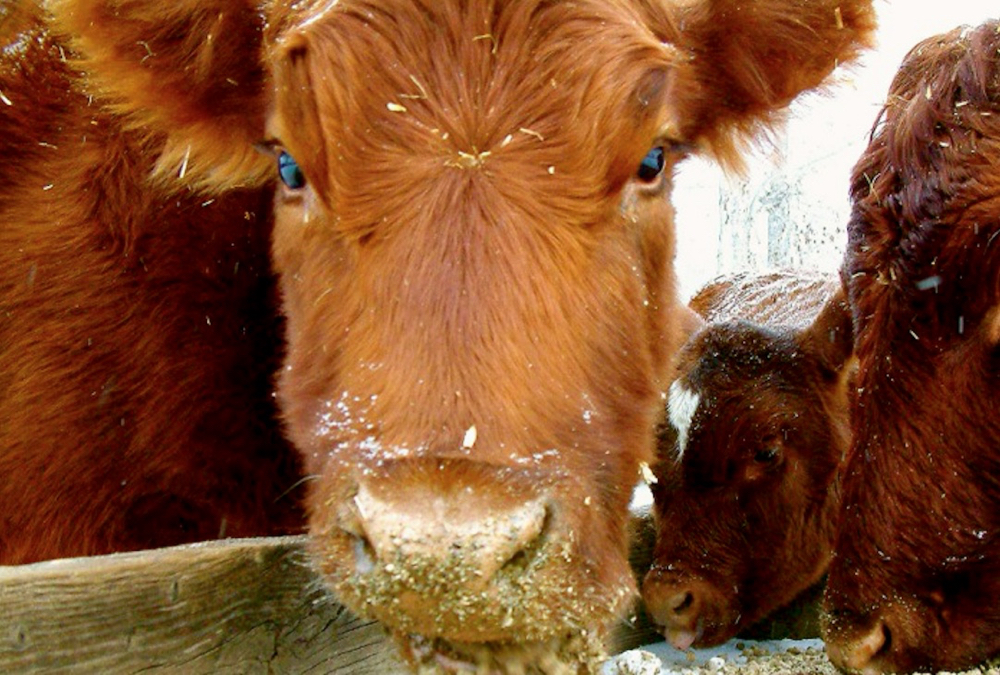Barley and corn prices have been extremely volatile over the past month. Large regions of Western Canada are experiencing drought-like conditions. At the same time, crop ratings for the U.S. corn crop reflect yield uncertainty in the Midwest. I’ve received many inquiries from feedlot operators and cow-calf producers regarding the price outlook for corn and barley. The cost per pound gain will influence the feeder cattle markets this fall. Cow-calf producers are wondering if they should be selling sooner or later. A major rally in the feed grain complex would weigh on feeder cattle prices. Southern Alberta is contending with drought conditions and feedlots in the Lethbridge area will be pulling corn or barley from farther distances. This makes the feed grain complex vulnerable to logistical issues and rail challenges that tend to occur every year. In this article, I’ll provide an overview of production expectations for corn and barley along with a few factors that could influence the price structure in the 2023-24 crop year.
According to Statistics Canada, farmers seeded 7.3 million acres of barley this spring. Our straw-poll survey of farmers and industry representatives across Western Canada had the average yield at 61.9 bu./ac. Using a traditional abandonment rate, Canadian barley production has the potential to come in at nine million tonnes, down from 10 million tonnes. More importantly, Alberta is expected to produce five million tonnes, down from the 2022 output of 5.4 million tonnes. The bulk of the Alberta production is in central Alberta and the Peace River region. The Saskatchewan barley crop is estimated at 2.9 million tonnes, down from last year’s crop size of 3.6 million tonnes. The western half of Saskatchewan has limited volumes due to extreme drought. Barley supplies are east of Regina and Saskatoon. Rail freight from eastern Saskatchewan to the West Coast is less than truck freight to southern Alberta. The barley crop will have problems with test weight.
A nine-million-tonne barley crop is sufficient to satisfy domestic feed demand. However, exports for the 2023-24 crop year are uncertain. China imposed tariffs totalling 80.5 per cent on Australian barley back in May 2020. In response, Australia lodged a complaint at the World Trade Organization (WTO). Earlier this spring, China agreed to a review of the tariffs on condition Australia suspend the complaint at the WTO. Traders took this as a positive signal that China would lift the tariffs. The lifting of tariffs is not a 100 per cent certainty as China asked for a one-month extension for their review process. China has been a major buyer of Canadian barley over the past three years and if they don’t lift the tariffs, we’ll likely see a return of the Chinese demand.
Read Also

Canadian Cattle Young Leaders, national Environmental Stewardship Award winner and more
Canadian beef industry news, including award winners and job changes.
Second, the Black Sea Grain Initiative expired on July 18 and Russia did not renew the agreement. Last year, China bought approximately 11 million tonnes of Ukraine corn. Black Sea barley also trades into the Middle East and is often the lowest-price barley on the world market. Ukraine export volumes are another uncertainty.
Finally, Australia is also expected to experience a year-over-year decline in their barley production due to El Niño. After three years of bumper crops, Australian production will be down from last year and the exportable surplus is another variable that could influence off-shore demand for Canadian barley.
U.S. corn production will be down from earlier projections. Earlier in spring, traders were comfortable with a trend yield projection; however, adverse dryness in June and July caused analysts to lower their yield estimates. The USDA is expected to trim their yield forecasts on upcoming World Agriculture Supply and Demand Estimate reports. We believe the trade is factoring in a U.S. corn crop of around 375 million tonnes, down from the recent USDA estimate of 389 million tonnes but up from the 2022 crop of 349 million tonnes.
At the time of writing this article, Brazilian corn (free on board to Paranaguá) was lower priced than the U.S. corn out of the Gulf. Once the Brazilian exportable surplus dwindles later in the fall, the U.S. will be the dominant supplier for world buyers. Barley and corn prices in Western Canada will likely move in tandem after the U.S. corn harvest is completed.
The main Brazilian corn harvest occurs during June. Traders are expecting the 2024 Brazilian harvest to be down from June 2023.
Cow-calf producers are selling feeder cattle but they need to be aware of the barley and corn fundamentals. I’ve encouraged feedlot operators using corn to step forward for their 2023-24 requirements. Feedlots using barley need to purchase barley during the harvest period as this will likely be the seasonal low. As in past years, feedlot operators need to have one to two weeks of corn or barley in reserve storage in case of logistic truck delays or rail issues. In Western Canada, we can count on one month of extreme winter weather.

















